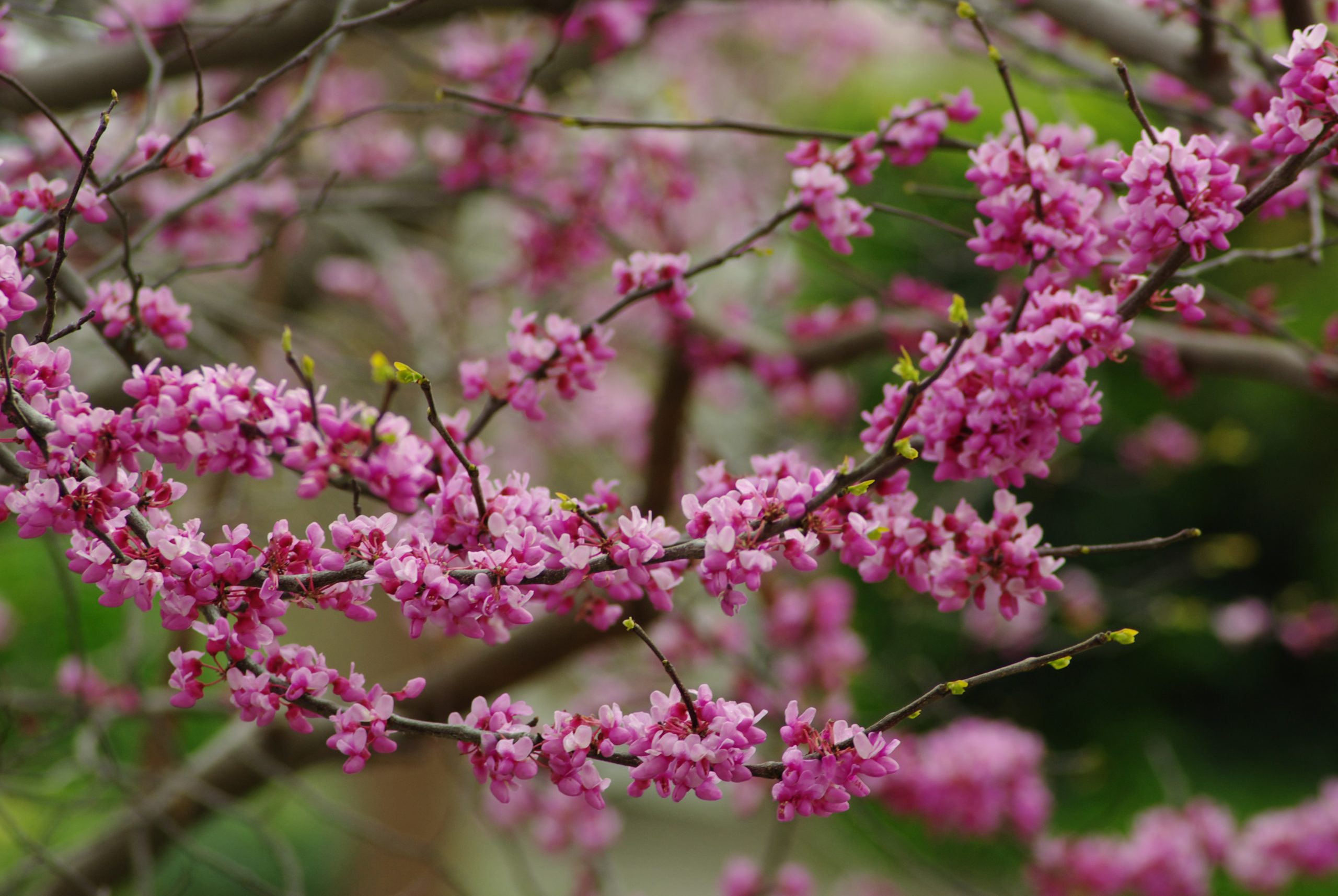
During the summer, one of the most common questions we are asked is, “What is eating my Redbud (Cercis species) tree? There are a couple of possible culprits, yet they are easy to distinguish.

Leafcutter Bee
Leafcutter Bees look more like flies than bees. They are one of our few summer pollinators, so they are good guys to have in the yard. They are merely taking pieces of the leaf to make unique, straw-shaped egg cases with many little cells for new bees to hatch from.
They love pliable leaves from plants like Redbuds, Bougainvillea, grapevines, and more. While it may be a nuisance, they are not harming the plants, and since they are a beneficial insect, please do not spray to kill them.
You can read more about Leafcutter Bees here.

Redhumped Caterpillar
These guys are voracious. Once they hatch, they can devour a good section of a tree in just a couple of days. They are only here mid-summer and in the fall. As soon as you see them or the damage appears, we recommend using Bt or Spinosad for control.
This year (July 2022), as I write this, we are seeing our first hatch, which means there likely be a second life cycle about September. The exact timing of the first hatch seems to be weather dependent. They wait for the heat. The first year I remember seeing them, they only hatched in September. That time of year, it isn’t as much of an issue to treat for them as the tree is getting ready to go dormant.
However, if you keep having them year after year and they seem to get worse, treating them anytime you see them appear to reduce populations is a good idea. Some people prefer to use Bt to prevent harm to beneficial insects. However, Bt has to be sprayed every seven days. That is the longest it is effective on the plant. You can read more about the Redhumped Caterpillar, here.

